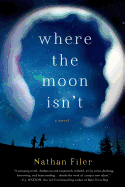
| Publisher: | St. Martin's Press | |
| Genre: | Fiction, Family Life, Literary | |
| ISBN: | 9781250026989 | |
| Pub Date: | November 2013 | |
| Price: | $24.99 |
| Starred | Fiction |
by Nathan Filer
Equal parts family drama, mystery, coming-of-age and meditation on mental illness, Nathan Filer's unusual and haunting debut novel, Where the Moon Isn't, defies easy categorization. Whereas many genre-bending novels tend to overreach, this one succeeds on every level, most notably with its affecting--and perhaps unreliable--protagonist, Matthew Homes. He introduces his brother this way: "His name's Simon. I think you'll like him. I really do. But in a couple of pages he'll be dead. And he was never the same after that." Yet as Matthew reveals himself through letters, documents, memories, observations of others and even his drawings, it becomes clear that he is one of the most honest narrators you will ever meet.
Matthew grieves the loss of Simon, who had Down Syndrome and died when they were both children. He also suffers from a mental illness that is gradually revealed. He has hallucinations, alternating periods of mania and depression, and a tendency not to take his medication or follow the outpatient treatment program designed for him. His grief is not simple; it's mixed with guilt because he believes he is responsible for his brother's death.
When Matthew talks about being visited by Simon, it makes sense to us in the same way it does to Matthew, and this window into a mental illness that is so often misunderstood and misrepresented is both interesting and enlightening. Despite his turmoil, Matthew is great company. Smart, funny and compassionate, he makes us believe, if only for a moment, that it is possible to conjure a loved one simply through the energy of longing and memory. --Debra Ginsberg, author
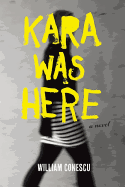
| Publisher: | Soft Skull | |
| Genre: | Fiction, Literary | |
| ISBN: | 9781593765330 | |
| Pub Date: | October 2013 | |
| Price: | $15.95 |
| Fiction |
by William Conescu
When 30-something real estate agent Brad learns his ex-girlfriend Kara has died of an overdose, he wonders if he didn't always see it coming. Though they haven't spoken for years, Kara was always impulsive and self-destructive. While Brad's wife sympathizes with the peculiar pain of losing an already-lost love, she does not anticipate the surging anxiety it triggers in her husband, a man whose heart was never released by his first love. With the novel Kara Was Here, William Conescu (Being Written) speaks to the rippling effects of an individual's life after death.
Though Kara's death is tragic in its own right, it is also a harbinger of greater, more abstract loss. To Brad and her college friends, she was the last link to a freer past, the sole survivor of a lifestyle they once shared. To her much younger sister, Gwen, Kara represents an intimidating, hypersexual adulthood. Gwen's grieving manifests itself in perverse relationships with Kara's old lovers, suggesting the loss of her sister is linked with the loss of her own innocence and youth.
In many ways, Kara Was Here can be read as a contemporary take on James Joyce's The Dead. No matter the fullness of the present, it will never eclipse the romantic past. The pain of Brad's wife runs deep--she must accept her husband even though some caverns of his heart will never be open to her. Conescu's characters are resilient. Reading through their struggles is an exercise in catharsis and compassion. --Annie Atherton
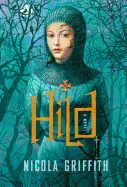
| Publisher: | Farrar, Straus & Giroux | |
| Genre: | General, Fiction, Historical | |
| ISBN: | 9780374280871 | |
| Pub Date: | November 2013 | |
| Price: | $27 |
| Starred | Fiction |
by Nicola Griffith
With the historical epic Hild, Nicola Griffith creates an alternate reality, strange in its particulars yet utterly recognizable as human. Through the preternaturally observant eyes of Hild--a child when the novel begins--Griffith unfurls a vivid tapestry of nature and craft, belief and myth. Inspired by the life of St. Hilda of Whitby, Hild is an immersive experience, its exquisite language serving as a portal to a distant time and place.
In the seventh-century Northumbrian court of King Edwin, his niece Hild rises to prominence as a seer through the machinations of her mother, Breguswith. In truth, the girl's "prophecy" is shaped by her extraordinary intelligence and powers of observation, which enable her to see patterns in the intrigues and political machinations of those around her. But danger is constant, and Hild must prove her usefulness to King Edwin again and again--or die. While everyone orbits the king, Breguswith operates so cannily from the shadows that her effects on the court may be the most profound of all.
The women in this world are strong and complex. Particularly intriguing is the lifelong bond between pairs of women, called gemæcce, who spin and card together from childhood until death, through marriage, sickness and childbearing.
Though it is the richness of historical detail that may be most overtly noticeable, Hild is above all a story of love and friendship--and how the preservation of those things demands sacrifice. --Ilana Teitelbaum, book reviewer at the Huffington Post
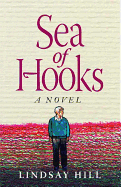
| Publisher: | McPherson & Co. | |
| Genre: | Fiction, Coming of Age | |
| ISBN: | 9781620540060 | |
| Pub Date: | November 2013 | |
| Price: | $25 |
| Fiction |
by Lindsay Hill
Lindsay Hill's Sea of Hooks begins with a man named Christopher Westall staring at his mother's asphyxiated body. Her suicide is only the latest in a long series of traumatic events in Christopher's life, and it creates an emotional fissure that widens into a vast gulf between life before and after her death. The narrative splits accordingly, weaving together two chronologies: one timeline describes his dysfunctional youth; the other follows his trip to Bhutan after his mother's suicide.
His upbringing is almost a parody of Victorian repression, while the trip to the "Far East" in search of spiritual healing is a painfully well-worn trope. Nevertheless, Sea of Hooks is an impressive work that uses an experimental, fractured format to great effect, benefiting from Hill's powerful poetic sensibility. The novel is divided into very short chapters, ranging from a sentence to a paragraph in length. They build haphazardly, the way memories tumble forward after an initial triggering event. Each chapter is meticulously crafted, representing a stand-alone thought or image. Some include a significant amount of narrative detail, accumulating into a coherent image of Christopher's childhood; others begin as simple descriptions and morph into stream-of-conscience explorations of his mental state.
The novel's title could easily refer to Hill's unusual writing style, as each short chapter "hooks" the reader afresh, offering a thought-provoking and multifaceted image best absorbed in an instant and pondered for days. Sea of Hooks is the rare novel that is both experimental and accessible, at once a joy and a challenge to read. --Emma Page, bookseller at Wellesley Books
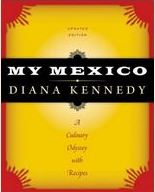
| Publisher: | University of Texas Press | |
| Genre: | Regional & Ethnic, Mexican, Cooking | |
| ISBN: | 9780292748408 | |
| Pub Date: | October 2013 | |
| Price: | $39.95 |
| Food & Wine |
by Diana Kennedy
Diane Kennedy's name was synonymous with superb Mexican cooking even before My Mexico--filled with delicious recipes and personal accounts of her travels around Mexico--was first published in 1998. It's back in print and updated with new photographs that add visual beauty to the more than 300 sensual and authentic dishes from all parts of Mexico.
Throughout her journeys, Kennedy has always sought the best cuisine from each region, often traveling hundreds of miles to reach a tiny house or store in search of that one perfect recipe. Readers meet the Mexicans who create these dishes, stepping into their homes alongside Kennedy as she tastes such treats as cajetas, "thin layers of fruit conserve rolled up with a coating of sugar, the most delicious being a pale green in color... made of steamed green mangoes," or chocolate-flavored tamales served with eggnog. For savory dishes, the choices range from eggs with cactus and cilantro to pork loin in guava sauce to langostinos in pumpkin seed sauce.
Kennedy's stories and recipes evoke the authentic flavors, sights and smells of Mexico. She also provides much useful information, from the types of cookware needed to a comprehensive chart describing varieties of chiles. My Mexico will certainly aid armchair travelers and cooks alike in gaining a much deeper appreciation for the people of Mexico and their culinary delights. --Lee E. Cart, freelance writer and book reviewer
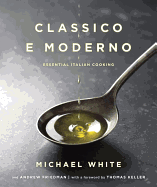
| Publisher: | Ballantine | |
| Genre: | Regional & Ethnic, Gourmet, Methods, Cooking, Italian | |
| ISBN: | 9780345530523 | |
| Pub Date: | November 2013 | |
| Price: | $50 |
| Food & Wine |
by Michael White, Andrew Friedman
Michael White, an executive chef who owns nine successful restaurants from New York to Hong Kong brings his trademark spin on Italian cuisine to Classico e Moderno. Stuffed full of delicious recipes, luscious photographs and helpful cooking tips, it will appeal to novice and veteran cooks alike.
The first half of the book--Classico--delves into White's Wisconsin upbringing and years of training in Italy, including his exploration of the variations in regional Italian cooking. He also shares more than 100 classic Italian recipes, ranging from bistecca alla fiorentina (steak Florentine) to gnocchi to pomodori gratinati (baked tomatoes with breadcrumbs).
The recipes follow a traditional Italian meal pattern--from appetizers to soup to pasta to meat courses to dessert--but are also flexible, inviting the home cook to expand upon and alter them to fit the ingredients on hand, just as an Italian cook would.
The second half of the book, Moderno, is more about White's vision of modern Italian cuisine, combining classic Italian ingredients with French techniques and American twists. These recipes are a bit more exotic, including sea urchin and lardo crostini, gazpacho with grilled mackerel, seaweed pesto with chive oil and venison medallions with quince purée and juniper sauce.
Whether enjoying a simple classico favorite or tackling a delicious moderno dish, Classico e Moderno is sure to please cooks of all abilities and lovers of Italian food. --Jessica Howard, blogger at Quirky Bookworm
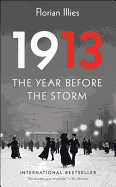
| Publisher: | Melville House | |
| Genre: | General, Modern, History, Europe, 20th Century | |
| ISBN: | 9781612193519 | |
| Pub Date: | October 2013 | |
| Price: | $25.95 |
| History |
by Florian Illies, trans. by Shaun Whiteside, Jamie Lee Searle
Florian Illies's 1913: The Year Before the Storm is an astonishingly rich cultural portrait of Europe just before World War I. It animates the personal and creative lives of the era's avant-garde--from Picasso and Gertrude Stein to Freud, Jung and D.H. Lawrence--while untangling the intricate webs connecting them, all in the guise of a collection of miniatures.
Illies gives each month of the year a chapter consisting of vignettes, some only a sentence and others a few pages, offering glimpses of his subjects as they meet and couple and break from each other from one end of the continent to the other. He colors his portraits with diary entries, letters and excerpts from contemporary newspaper accounts. We are privy to Kafka's most intimate thoughts as, with agonized ambivalence, he vacillates about making one of history's most tortured marriage proposals. Oskar Kokoschka obsessively paints his self-portrait, in bed with his lover Alma Mahler; it must be his masterpiece, her condition for their marriage. Meanwhile, Hitler spends his days painting watercolors in his Vienna flat, and the Mona Lisa remains missing from the Louvre until November.
The most devastating war the world has yet known will soon erupt, the shadow underlining the hopes and neuroses of all these "pioneers of modernism," as Illies writes, who are each engaged in "the struggle against depression, drinking, senseless distraction and the advance of time."
This is an immensely enjoyable, imaginative, and textured history of one the most vibrant periods in Western culture. --Jeanette Zwart, freelance writer and reviewer
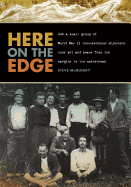
| Publisher: | Oregon State University Press | |
| Genre: | Political Science, United States, History, State & Local - Pacific Northwest, World War II, Peace, Military | |
| ISBN: | 9780870716256 | |
| Pub Date: | October 2013 | |
| Price: | $24.95 |
| History |
by Steve McQuiddy
The United States has a tradition of conscientious objectors stretching back to Henry David Thoreau and Walt Whitman. Steve McQuiddy's fascinating Here on the Ledge uncovers the story of a talented group of men who resisted military enlistment during World War II, serving in a civilian service camp on the Oregon coast instead.
Their duties, six days a week, for no pay, focused on tree planting, road building and firefighting. One of the conscientious objectors, poet Bill Everson (aka Brother Antonius), penned "Here on the Edge" in March 1943, for the camp's alternative paper. He wrote that they were biding their time "when what we are, and that for which we have taken this stand, can be tangent again to the world." They had no idea, McQuiddy says, "how their words and actions would resonate far beyond the borders of this backwoods camp."
During the evenings, the "Fine Arts Group of Waldport" published books, produced plays and made art and music. Their members included William Eshelman, future president of Scarecrow Press; Kermit Skeets, co-founder of Centaur Press; and Adrian Wilson, founder of San Francisco's the Press in Tuscany Alley. The West Coast sensibility that emerged from the camp later helped shape the Beat Generation.
Illustrated with rare photos and drawings, Here on the Edge is a significant cultural history of a group who chose art over war, a "concentration of energy, a convergence of thought and action, a creative intensity... that was rare and perhaps unique." --Tom Lavoie, former publisher

| Publisher: | Sounds True | |
| Genre: | Rituals & Practice, Body, Mind & Spirit, Buddhism, Religion, Meditation | |
| ISBN: | 9781622030637 | |
| Pub Date: | November 2013 | |
| Price: | $25.95 |
| Religion |
by Joseph Goldstein
Joseph Goldstein has studied and taught insight meditation and Buddhist practices for almost 50 years; Mindfulness: A Practical Guide to Awakening is a lucid, warm distillation of this experience and wisdom. Goldstein examines the Satipatthana Sutta, which contains the four foundations of Buddhist mindfulness, and presents it to modern audiences in an accessible and discerning manner.
Focusing on such tools as "ardency," "clear knowing" and "concentration," Goldstein makes a case for the use of Buddhist technique to survive the mundane daily grind and arrive at spiritual awakening. He breaks the concept of mindfulness down to four useful categories: the body, feelings (including sensory perceptions), mind and dhammas--Buddhist categories of experience that identify the hindrances and help-aids on the path to awakening.
Mindfulness is a master class in Buddhist teaching--and in more general wisdom suitable for an age in which mindfulness has become a centerpiece to new approaches in healthcare, addiction and business management. Goldstein stays true to his source material, but never gets bogged down by technical or non-English jargon. Each teaching is amply supported by compassion and the firm strength of one who's been there and done that. Throughout, one feels the love Goldstein has for this material, this path and for his fellow pilgrims on the way. His ample, big-hearted book will be useful for long-time practitioners or those new to Buddhism or meditation alike. --Donald Powell, freelance writer

| Publisher: | Chelsea Green Publishing | |
| Genre: | Animals, Mammals, Psychology, Zoology - Mammals, Cognitive Psychology, Wildlife, Life Sciences, Bears, Science, Nature | |
| ISBN: | 9781603583909 | |
| Pub Date: | November 2013 | |
| Price: | $24.95 |
| Nature & Environment |
by Benjamin Kilham
For Benjamin Kilham, black bears have been part of daily life for more than 20 years. He and his wife have raised dozens of orphan cubs, helping them reintegrate into nature, and what he's discovered in his nonscientific observations has changed the way the scientific world and general population thinks about and interacts with these highly communal animals.
In Out on a Limb, Kilham explains the intricate social hierarchy of bears--once thought to be solitary creatures--and the elaborate relationships they develop, based on the availability of food, to ensure the survival of them all. "The more alliances a bear forms with its neighbors, it appears," he writes, "the more likely it is to secure food in times of shortage." Using radio collars and daily observations, Kilham gathered meticulous details on the ways bears communicate--including vocal sounds, scent and urine deposits and ear, eye and body language. (He compares these to our own forms of communications and draws some interesting correlations between species.) He's been an eyewitness to courtship and mating rituals, monitored bears with cubs in hibernation and received many bear bites and swats--experiences he believes place him squarely in the ursine family.
Kilham's attention to specifics and his obvious love of black bears are apparent throughout this rich and enlightening narrative. --Lee E. Cart, freelance writer and book reviewer
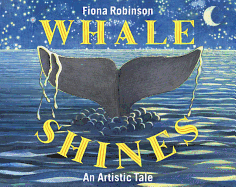
| Publisher: | Abrams | |
| Genre: | Animals, Marine Life, Art & Architecture, Juvenile Fiction | |
| ISBN: | 9781419708480 | |
| Pub Date: | November 2013 | |
| Price: | $17.95 |
| Starred | Children's & Young Adult |
by Fiona Robinson
Having explored the musical talents of landlubbing creatures in What Animals Really Like, Fiona Robinson turns her attention to artistic-minded ocean-dwellers in this funny and touching tale.
In the upper left-hand corner of the opening two-page illustration swims a barely visible fish beneath a narrow strip of sky. "Once upon a tide...," the story begins. A turn of the page completes the sentence: "...a whale came with a message." Whale now appears front and center, bearing a call for entries for "The Hugest Art Show in the Deep & Briny," curated by Jackson Pollock. As the whale spreads the word, he catalogues all of the projects in progress by his undersea neighbors. Hammerhead composes sculptures from materials left by shipwrecks. Eel makes patterns by wriggling in the sand. Robinson endows each with its own palette and adds comic touches.
Whale wishes he could make something, "but I'm just in advertising," he says. A reply comes back from an unlikely ally, "Why don't you try?" reply the plankton. Robinson acknowledges their adversarial relationship ("please go away before I eat you!"), but as Whale swishes his tail, something happens. Robinson's climax pays tribute to Vincent Van Gogh and the idea that a great artist introduces his or her onlookers to a fresh perspective on the world and shows them a view they've never seen before. The author-artist adds another layer, too: through Whale and the plankton's collaboration, they overcome their differences in service of a greater purpose. --Jennifer M. Brown, children's editor, Shelf Awareness
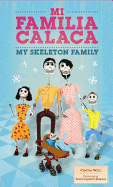
| Publisher: | Cinco Puntos Press | |
| Genre: | Foreign Language Study, Juvenile Nonfiction, Spanish, Art, Multigenerational, Sculpture, Family | |
| ISBN: | 9781935955504 | |
| Pub Date: | November 2013 | |
| Price: | $14.95 |
| Children's & Young Adult |
by Cynthia Weill, illust. by Jesús Canseco Zárate
Anita, the young narrator, introduces readers to her two brothers, mother, father and grandparents in this bilingual celebration of family. Capturing the rich tradition of honoring our ancestors, this folk art celebration connects to the Mexican commemoration of the Day of the Dead.
Cynthia Weill (Count Me In!; Opuestos) writes of a household, perhaps like readers' own, using language familiar to beginning readers, to tell about the family members and even pets. Each page contains simple sentences in both English and Spanish to describe each character. Young Anita introduces her hermanos (brothers), her hermosa (beautiful) mother and guapo (handsome) father. Her grandmother has good advice (muy buenos consejos) and her grandfather is the sweetest (tan tierno). Anita's great grandmother is a fabulous storyteller. "My wonderful familyMi maravillosa familia."
Oaxacan folk artist Jesús Canseco Zárate creates papier-mâché sculptures of calacas (skeletons) to illustrate Weill's text, which are then photographed. These gentle sculptures are not meant to scare but rather to share awareness of age-old traditions. The skeletons are thin, with long necks and black-lined teeth in warm, upturned smiles. The family members wear colorful, patterned materials, and small elements of style such as the mom's pearls or the little bird on the baby brother's blue, one-piece jumper. On the last page, the author shares: "In Mexico the skeleton is a beloved and humorous figure. Its origins go back to pre-Columbian times."
Author and artist share the joy of family love and familial roles across languages and... across cultures. --Mollie Welsh Kruger, graduate faculty, Bank Street College of Education